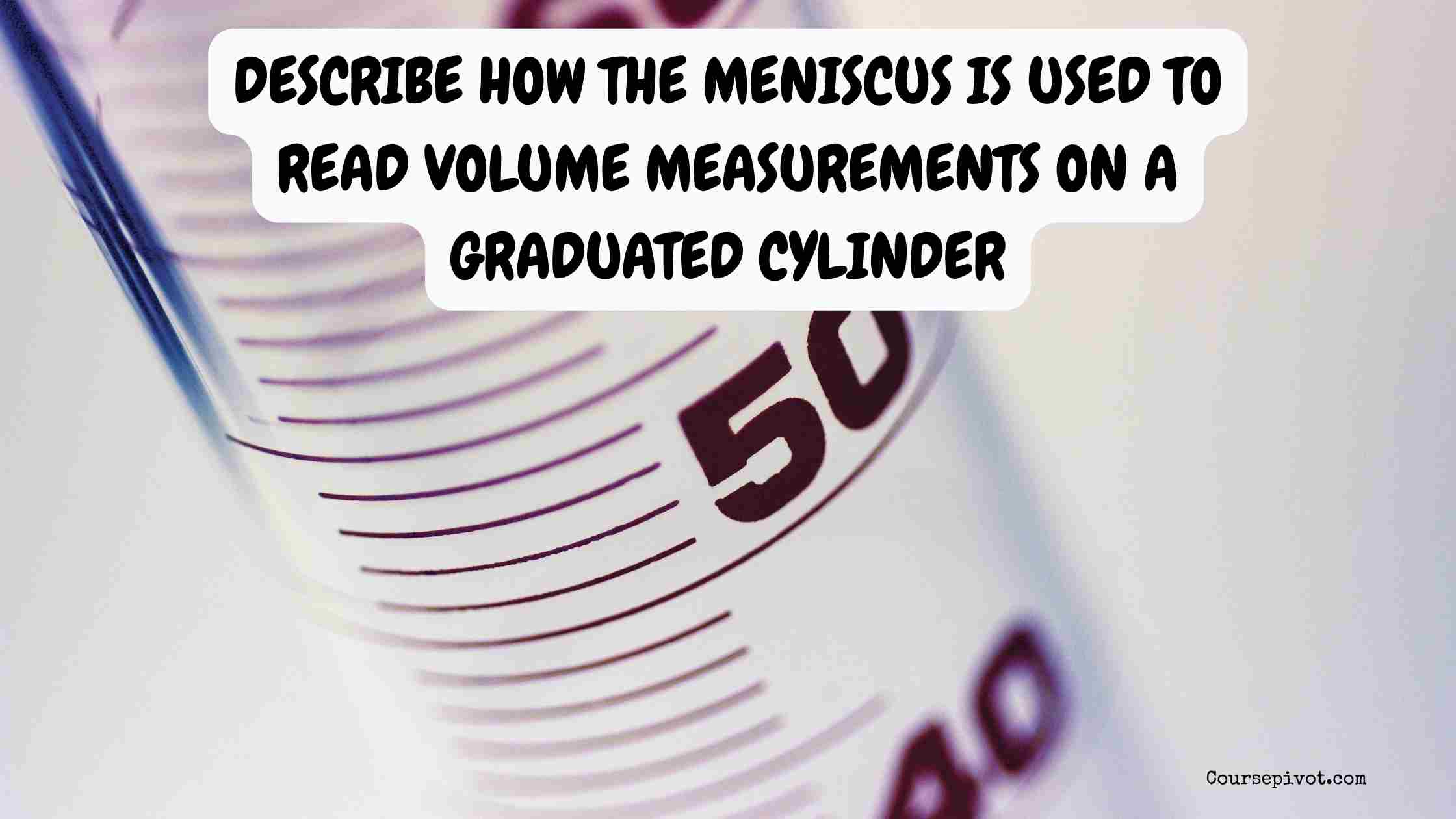
How the Meniscus Is Used to Read Volume Measurements on a Graduated Cylinder
When measuring liquids in science, accuracy matters. And one tiny curve of liquid can make all the difference. That curve is called the meniscus—and knowing how to read it properly can make or break your measurements in any lab setting.
Table of Contents
But what exactly is the meniscus, and how do we use it when measuring volume with a graduated cylinder?
Let’s break it down in simple, practical steps.
What Is a Meniscus?
A meniscus is the curved surface of a liquid in a container, such as a graduated cylinder or beaker. This curve forms due to the surface tension of the liquid and the interaction between the liquid and the container walls.
There are two types of menisci:
- Concave meniscus – curves downward (e.g., water, alcohol)
- Convex meniscus – curves upward (e.g., mercury)
In most school or laboratory settings, you’ll be working with water-based solutions, which form a concave meniscus.
Why Is the Meniscus Important?
The meniscus affects how you read volume. If you read the wrong part of the curve, even by a small amount, your measurement will be inaccurate. This could throw off experiments, chemical reactions, or dosage preparations.
Imagine measuring medicine or conducting a chemical titration with the wrong volume—accuracy is not optional, it’s critical.
How to Use the Meniscus to Read a Graduated Cylinder Correctly
To describe how the meniscus is used to read volume measurements on a graduated cylinder, follow these important steps:
🧪 1. Place the Cylinder on a Flat Surface
Always ensure the graduated cylinder is upright and level on a flat surface before taking a measurement. Tilting or holding it in your hand can cause the liquid to shift unnaturally.
🧪 2. Get Eye-Level with the Meniscus
Your eyes must be at the same level as the meniscus to get an accurate reading. Looking from above or below will cause a parallax error, which leads to incorrect volume reading.
🧪 3. Identify the Bottom (or Top) of the Meniscus
For most liquids like water:
- Read the bottom of the meniscus (the lowest point of the curve).
- For mercury or other liquids with a convex meniscus, read the top of the curve instead.
🧪 4. Line Up the Bottom of the Meniscus with the Nearest Mark
Align the lowest point of the curve with the nearest graduation mark on the cylinder. If it’s between marks, estimate as accurately as possible based on the spacing.
Read our blog on Can I Pay Someone to Do My Homework Online?
Tips to Remember
- 🔹 Always use a clear, clean graduated cylinder for visibility.
- 🔹 Read the volume with a steady hand and no shaking.
- 🔹 For very small volumes, use a volumetric pipette or burette for greater precision.
- 🔹 If you’re unsure whether to read the top or bottom, check the liquid type first.
Table: Meniscus Reading Quick Guide
| Liquid Type | Meniscus Shape | Read From |
|---|---|---|
| Water | Concave | Bottom |
| Alcohol | Concave | Bottom |
| Mercury | Convex | Top |
| Oil-based liquids | Variable | Bottom (usually) |
Why Reading the Meniscus Matters
So, to describe how the meniscus is used to read volume measurements on a graduated cylinder, we must emphasize:
- It’s all about reading at eye level.
- Focus on the lowest or highest point of the curve, depending on the liquid.
- Always ensure your container is stable and you’re using correct technique.
A precise reading can be the difference between a successful experiment and a failed one.
In science, accuracy is everything, and the meniscus is your visual cue for getting it right.
Next time you pour, pause, and peer—let the meniscus guide your measurement like a true lab pro.
Cite this article
You can copy and paste your preferred citation format below.
Martin, L. & Arquette, E.. (2025, May 27). How the Meniscus Is Used to Read Volume Measurements on a Graduated Cylinder. Coursepivot.com. https://coursepivot.com/blog/describe-how-the-meniscus-is-used-to-read-volume-measurements-on-a-graduated-cylinder/



